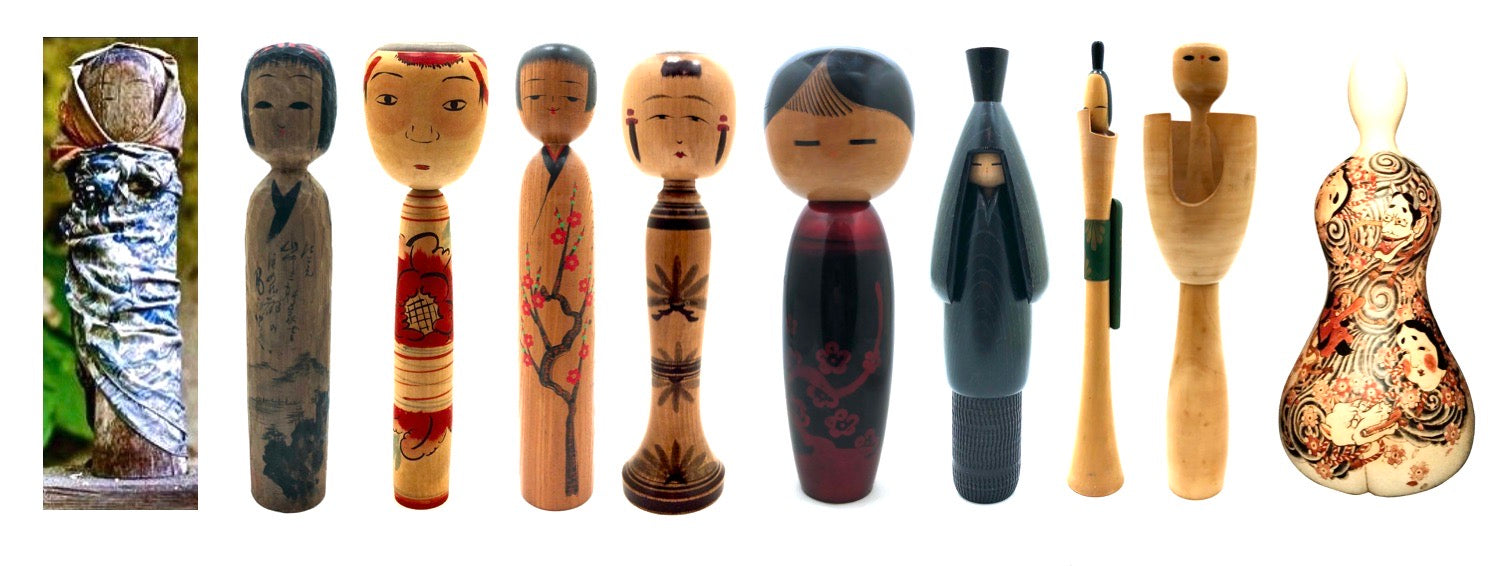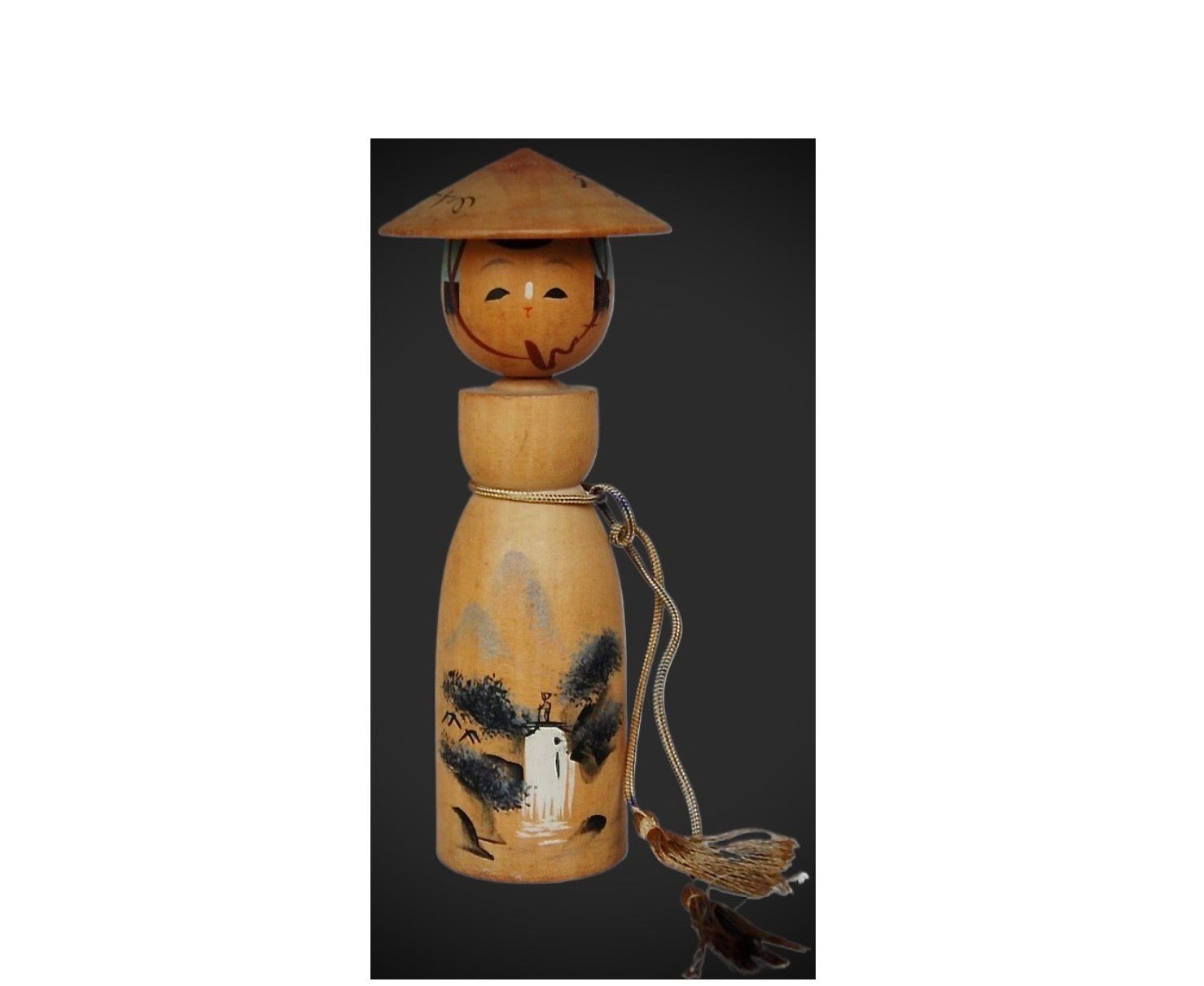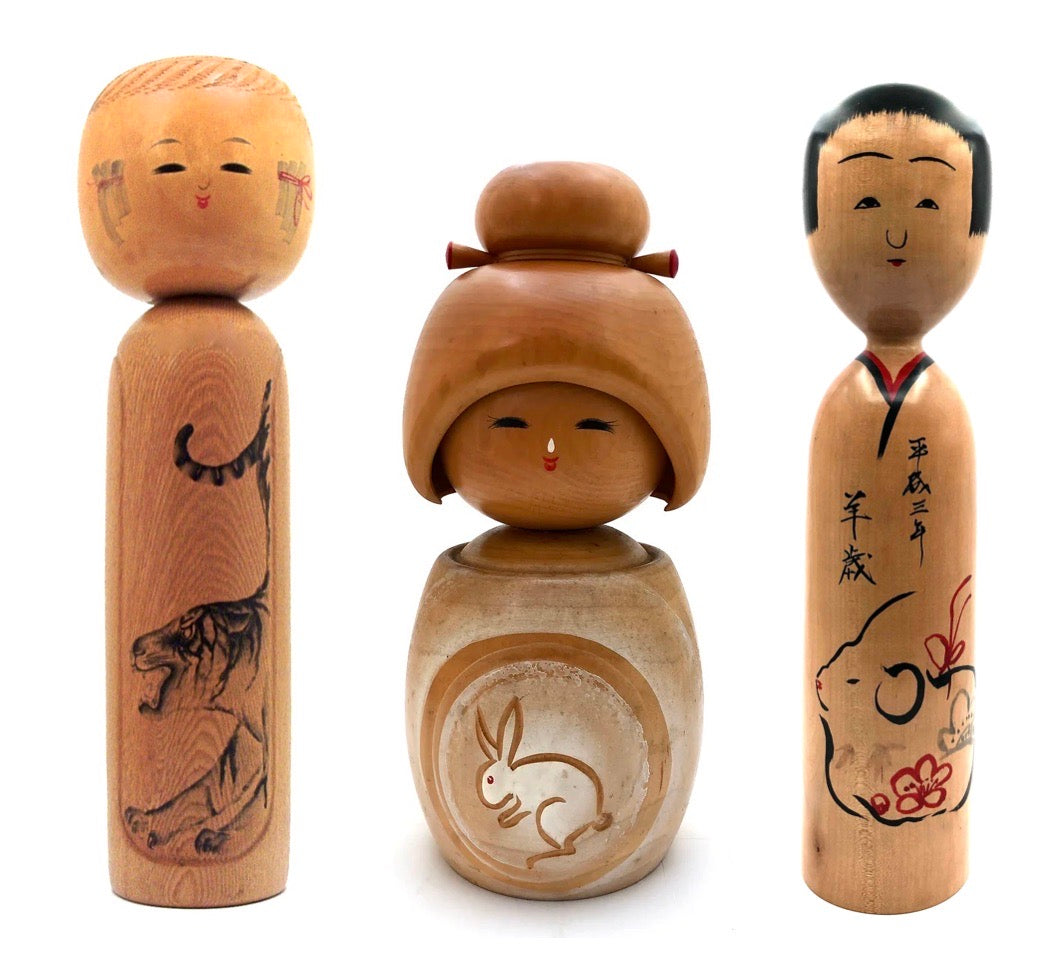Traditional and Sosaku Kokeshi have been an icons primarily from the northern regions of Japan for centuries. Note: that the Master Craftspersons (1950s-1980s) are either deceased or at an age where they are hoping to pass on their craft to family members, and other generations, in countless towns and villages throughout Japan. The major problem is that the talent pool of younger craftsmen and women is quickly shrinking, because they are not interested in investing in the lengthy and painstaking work required to produce these unique lathe-turned wooden creations.
If you are a serious collector of historic pieces, it is time to act to obtain notable works of the Kokeshi craft. In perusing on-line listings you will see that less and less notable works of art are available, and those pieces have prices that are increasitng at a high rate. The majority of pieces being sold are inspired and made by the masters associates and apprentices under his or her direction, and not carved or painted by the master. What remains available to the collector of works produced by Master carvers is limited.
In being retired academic educators and specialists in Kokeshi, we recently participated in a telecommunication session of a select group of educators in Gifu focused on the evolution of the Japanese Kokeshi Arts. It was shocking to hear what Japanese presenters cited regarding Kokeshi, and the changes taking place through each of the Kokeshi-producing regions in Northern Japan. New materials and technology, and what is referred to as bases and media, such as plastics and polymer clay, are beginning to dominate the Kokeshi world, and the natural material of wood, which formed the basis of Kokeshi are disappearing. The historical/cultural traditions typically incorporated into Kokeshi creations are limited, and have abstract graphic interpretations of traditional motif. They serve as a reminder of the traditional Japanese culture. Of course, this is good for the collector of contemporary works of art who are looking for the evolution of Kokeshi now giving more freedom of expression to the new carver, but do they retain the essence of Kokeshi art and design?





